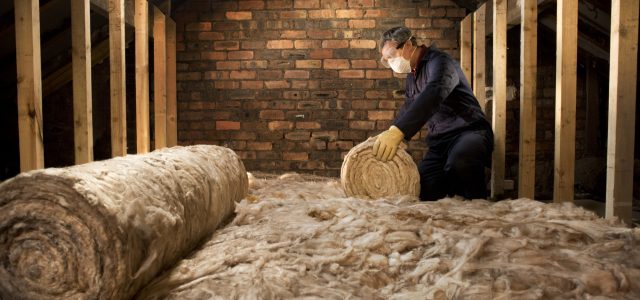
How Loft Boarding Can Save You Money
Introduction
Loft boarding is more than just a home improvement trend; it’s a savvy investment that can lead to significant savings. In this article, we’ll explore how loft boarding can save you money, enhance your home’s energy efficiency, and provide additional storage space. Let’s delve into the benefits, costs, and practical tips for loft boarding.
Loft boarding is a practical solution for homeowners looking to maximise their attic space while saving on energy bills. By installing loft boards, you can create a usable storage area and improve your home’s insulation. This article will guide you through the various ways loft boarding can save you money and enhance your living space.
Here’s a helpful three-column table summarising the key points from the article: This table provides a concise overview of the key aspects, details, and benefits of loft boarding as discussed in the article.
| Aspect | Details | Benefits |
| Energy Savings | – Improved insulation beneath loft boards | – Reduced heat loss – Lower heating bills – Better temperature control |
| Increased Storage Space | – Additional usable space in the loft | – Declutter home – Save on external storage costs – Increase property value |
| Enhanced Home Value | – Well-insulated and organised loft | – Attract potential buyers – Boost market value |
| Cost of Loft Boarding | – Average cost: £500 – £1,500 for professional installation | – Long-term savings on energy bills |
| DIY vs. Professional | – DIY: Cost-effective but requires expertise – Professional: Ensures correct and safe installation |
– Peace of mind – Potentially higher energy savings |
| Insulation Materials | – Options: Fibreglass, foam, cellulose | – Choose based on cost, R-value, and ease of installation |
| Proper Ventilation | – Essential to prevent moisture build-up and maintain air quality | – Avoid issues like mould and dampness |
| Raised Loft Boarding | – Allows for thicker insulation layers | – Enhanced energy efficiency – Stable surface for storage |
| Layout Planning | – Plan layout before installation | – Efficient use of space – Consider access points and lighting |
| Case Study: Smith Family | – Installed raised loft boards with high-quality insulation – 20% reduction in energy bills |
– Extra storage space – More organised and spacious home |
| Case Study: Eco-Friendly Home | – Used eco-friendly insulation materials – Significant savings on energy bills |
– Reduced carbon footprint – Comfortable indoor temperature year-round |
Benefits of Loft Boarding
Energy Savings
One of the primary benefits of loft boarding is improved energy efficiency. By adding insulation beneath the boards, you can significantly reduce heat loss, leading to lower heating bills. Proper insulation ensures that your home retains heat during the winter and stays cool in the summer.
Increased Storage Space
Loft boarding provides additional storage space, allowing you to declutter your home. This can save you money on external storage solutions and increase the overall value of your property.
Enhanced Home Value
A well-insulated and organised loft can boost your home’s market value. Potential buyers often look for homes with efficient energy solutions and ample storage space.
Cost of Loft Boarding
Initial Investment
The cost of loft boarding varies depending on the size of your loft and the materials used. On average, you can expect to spend between £500 and £1,500 for a professional installation. While this may seem like a significant investment, the long-term savings on energy bills can quickly offset the initial cost.
DIY vs. Professional Installation
Opting for a DIY installation can save you money upfront, but it requires time, effort, and some level of expertise. Professional installation ensures that the job is done correctly and safely, providing peace of mind and potentially higher energy savings.
Practical Tips for Loft Boarding
Choose the Right Insulation
Selecting the right insulation material is crucial for maximising energy savings. Common options include fibreglass, foam, and cellulose. Each material has its pros and cons, so consider factors like cost, R-value (thermal resistance), and ease of installation.
Ensure Proper Ventilation
Proper ventilation is essential to prevent moisture build-up and maintain air quality. Make sure your loft has adequate ventilation to avoid issues like mould and dampness.
Use Raised Loft Boarding
Raised loft boarding allows for thicker insulation layers, enhancing your home’s energy efficiency. This method involves installing a raised platform above the insulation, providing a stable surface for storage.
Plan Your Layout
Before installing loft boards, plan the layout to ensure efficient use of space. Consider factors like access points, lighting, and the type of items you’ll be storing.
Real-Life Examples
Case Study: The Smith Family
The Smith family from London decided to invest in loft boarding to create additional storage space and reduce their heating bills. After installing raised loft boards with high-quality insulation, they noticed a 20% reduction in their energy bills within the first year. The extra storage space allowed them to declutter their home, making it more organised and spacious.
Case Study: Eco-Friendly Home
An eco-conscious homeowner in Manchester opted for loft boarding with eco-friendly insulation materials. The investment not only reduced their carbon footprint but also led to significant savings on energy bills. The improved insulation helped maintain a comfortable indoor temperature year-round.
F.A.Q
What is loft boarding?
Loft boarding involves installing boards over the joists in your attic to create a stable surface for storage and improve insulation.
How does loft boarding save money?
Loft boarding improves insulation, reducing heat loss and lowering energy bills. It also provides additional storage space, saving money on external storage solutions.
Is loft boarding a DIY project?
While DIY loft boarding is possible, professional installation ensures the job is done correctly and safely, maximising energy savings.
What materials are used for loft insulation?
Common insulation materials include fibreglass, foam, and cellulose. Each has its advantages and should be chosen based on cost, thermal resistance, and ease of installation.
How much does loft boarding cost?
The cost varies depending on the size of your loft and materials used, typically ranging from £500 to £1,500 for professional installation.
Conclusion
Loft boarding is a cost-effective solution that offers numerous benefits, from energy savings to increased storage space. By investing in proper insulation and professional installation, you can enhance your home’s energy efficiency and save money in the long run. Whether you’re looking to reduce your heating bills or add value to your property, loft boarding is a smart choice for any homeowner.
For those interested in exploring loft boarding options, consider contact The Attic Guys for professional advice and installation.
